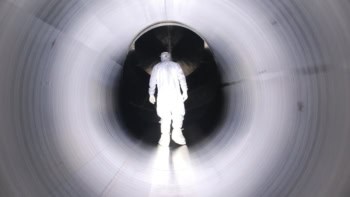NB: The paper reporting the discovery of element 118 was formally retracted by its authors in 2002. The retraction followed an investigation into alleged scientific misconduct by one of the authors, Victor Ninov.
In 1999 a team of researchers from the Berkeley lab, the University of California at Berkeley and Oregon State University claimed to have detected three atoms of element 118 in collisions between high-energy krypton ions and a lead target. “The observation of a chain of six high-energy alpha decays within about one second unambiguously signalled the production and decay of element 118” said team leader Ken Gregorich at the time. Element 118 was then the heaviest element to have been detected.
In a brief statement submitted to Physical Review Letters, which published the paper reporting the original discovery, the Berkeley team write: “Prompted by the absence of similar decay chains in subsequent experiments, we (along with independent experts) re-analyzed the primary data files from our 1999 experiments. Based on these re-analyses, we conclude that the three reported chains are not in the 1999 data. We retract our published claim for the synthesis of element 118.”
“Science is self-correcting,” said Berkeley director Charles Shank. “If you get the facts wrong, your experiment is not reproducible. There are many lessons here, and the lab will extract all the value it can from this event. The path forward is to learn from the mistakes and to strengthen the resolve to find the answers that nature still hides from us.”



